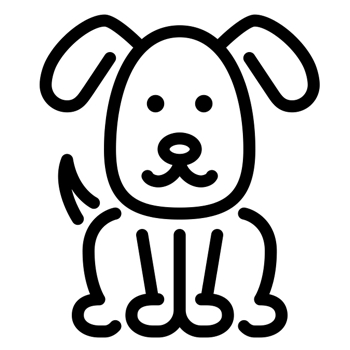Shepsky

The German Shepherd and Siberian Husky are two of the most popular pet dogs around and certainly two breeds with a lot going for them. It should come as no surprise that they have now been bred together, resulting in a brand-new cross-breed called the Shepsky. Owners and breeders have been blown away by this new breed of dog that is incredibly attractive, high-energy and mischievous.
While some will take more after their German Shepherd ancestors and others will be more ‘Husky-esque’, as this new breed establishes itself we are sure to see a more solid personality and appearance developing in the near future. For now, it can be difficult to predict both the appearance and the character of this new dog, although certain trends are already emerging.
About & History
The Shepsky, also known as the Gerbarian Shepsky, is a relatively new hybrid breed that resulted from the crossing of the German Shepherd and the Siberian Husky. These two breeds are incredibly popular, both in Northern America and internationally, so it was almost inevitable that they would one day combine forces and form their very own breed.
The German Shepherd hails from Germany and became established in the late 1800s. Initially used as a herding farmyard dog, they soon became employed in a variety of industries, including by the police, the army, and in search and rescue operations. They have always been renowned for their high levels of intelligence, strong work ethic and handsome, wolf-like appearance.
The Siberian Husky, on the other hand, is a truly ancient breed of dog that originated thousands of years ago in the Arctic. They were integral parts of society, providing transport and a courier service via sledding, herding reindeer, acting as watchdogs and also hunting for their owners’ sustenance. Over time, they spread to Canada and America, where their popularity grew and they established themselves as pets.
When exactly these two outstanding breeds merged to form one is unknown, and it is likely that owners were mixing German Shepherds and Siberian Huskies independently all over the world over the last few decades. Recently, the new breed had become recognised in its own right and is gaining in popularity at a rapid rate.
Appearance
In a word, the Shepsky is stunning. Having taken on the best physical attributes of both its parents, this is a dog with a truly breath-taking appearance.
A well-muscled and powerful dog that is nimble and athletic, the Shepsky has a long and lean body. These dogs have a relatively large head with a pointed muzzle and strong jaw. Their black nose is wide with large nostrils. Their ears are particularly sizable and erect. While their alert eyes may be blue or brown (or one of each), breeders and owners have a preference for the light blue eyes which contrast beautifully with their dark faces. They may have the Spitz-type tail of the Husky that curls over the back, or a more low-hanging tail like the German Shepherd.
Their soft fur is thick and offers ample protection from the outside environment. While most dogs are a mixture of brown and black, their coat may be a number of different colours, including:
- Black
- White
- Brown
- Blue
- Red
- Cream
The majority of dogs measure from 50cm to 61cm at the withers. Their weight varies dramatically from individual to individual, with breed members weighing anything from 22kg to 40kg.
Character & Temperament
With parents that include the larger than life German Shepherd and highly-strung, eager Siberian Husky, the Shepsky was never going to be lacking in the personality stakes! Until this breed becomes more established, there will be certain individuals that are more similar to German Shepherds, and others that have more of a Siberian Husky temperament. Even within litters, there will be a variety of characters and traits. Until the dog is fully matured, it can be difficult to predict their nature, particularly if they are first generation stock.
The Shepsky dog tends to be very high energy and always keen to live life to the fullest. Incredibly smart and aware, they also love to play and are loyal to their families. Those dogs that take more of their genetics from the German Shepherd side of the family will often be focused and disciplined, while those that inherit more of the Siberian Husky genes will be somewhat less obedient and more rambunctious and goofy.
Most Shepsky dogs will greet new people in the home suspiciously, however, some will act more reserved and stay away from the new arrivals. The majority of this breed are very sociable with the whole family, including children, and will bond closely with those they spend most time. With the correct socialisation and as long as introductions are carried out early in life, most Shepsky dogs will do well around other pets. Care is advised when around prey animals, such as rabbits and guinea pigs, however, as they may be chased and harassed.
Trainability
Certainly not a task for the faint-hearted, training a Shepsky can give mixed results and requires a lot of dedication and time. Their trainer should act both firm and fair and must always be the one in control. As they can have a short attention span if not entertained, all training sessions should be fun, interactive and not too drawn-out. They resent repetitive and boring training and perform much better if mentally stimulated when at work.
A breed that loves to have a job to do, a Shepsky thrives when given sensible tasks to complete and enjoys when their mind and body are both stimulated at the same time. This is definitely a breed that requires an experienced owner and one with plenty of time on their hands to dedicate to the development of this clever canine.
Health
Though no specific health studies have been performed on the Shepsky itself, we can predict the illnesses to which they will most likely be predisposed thanks to studies performed on their parents.
Hip Dysplasia
We all know that the German Shepherd is the poster boy for hip dysplasia, and sadly, mixing them with a Siberian Husky (another dog breed commonly afflicted) is unlikely to improve the hip health of the Shepsky.
It is essential to screen for this disease in parent dogs, as it has a known genetic component and can dramatically affect both the quality and quantity of a dog’s life.
Anal Furunculosis
A painful disorder that is not fully understood, anal furunculosis is thought to be an immune-mediated disease that results in discharging tracts and ulcers in the tissue around the anus. Dogs can find going to the toilet sore and may cry out.
Owners may notice a foul smell and may see stains left behind where the dog has been sitting. This condition is typically treated medically, though can persist and may recur in some dogs.
Bloat
A life-threatening condition, ‘bloat’ is the swelling of the stomach with air and fluid. Why this happens remains a mystery, though some studies have linked it to the ingestion of a large amount of food and water before exercise. The danger, is that once bloated, the stomach may twist on its axis preventing any gas or liquid from escaping. The stomach can continue to expand, compressing local blood vessels and causing the dog to go into shock. The earlier bloat is treated, the better the prognosis.
Atopic Dermatitis
Chronic allergies can be incredibly frustrating for both dogs and owners, resulting in itchy and infected skin. Any part of the skin can be affected, though it tends to be the face, armpits, groin and feet that flare up the most. While allergies are rarely cured, they can be well-managed with lifestyle changes and medication.
Exercise and Activity Levels
The Shepsky has a particularly high exercise demand and needs daily vigorous walks and runs to keep it satisfied. This breed loves to try out new activities and will positively excel at many canine sports, including agility and fly-ball.
A Shepsky dog is not a suitable pet for those who live in a confined space without a good-sized backyard. They love their space and their freedom so should not be expected to live in confined quarters. An under-exercised Shepsky will be forced to expend their energy elsewhere, by developing unwanted vices, such as incessant barking, tail chasing or furniture chewing.
Grooming
The thick, luxurious coat of the Shepsky is undeniably beautiful but sheds an awful lot. Owners must be prepared for a lot of brushing and to never again have a fur-free home again!
Claws may need clipping every couple of months or so, particularly if not walked on firm ground, and this is a task that should be introduced from puppyhood to ensure compliance.

